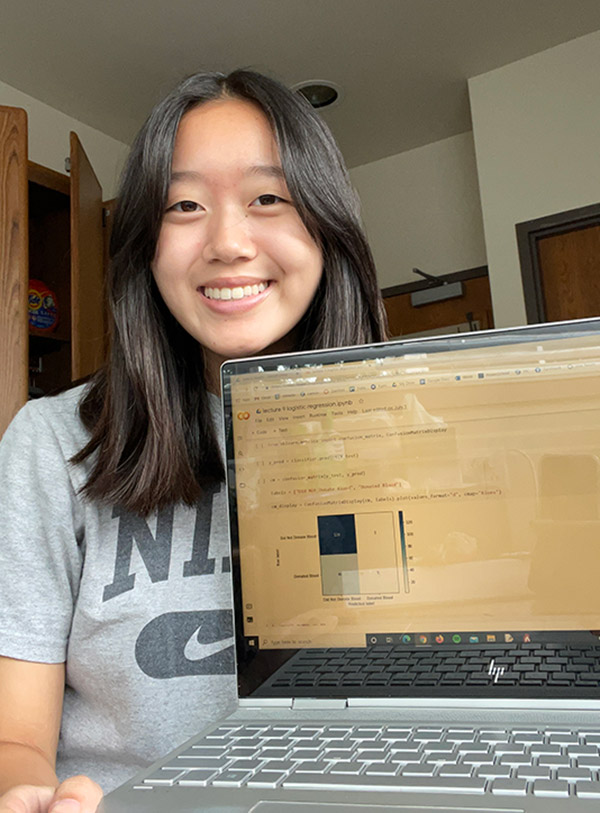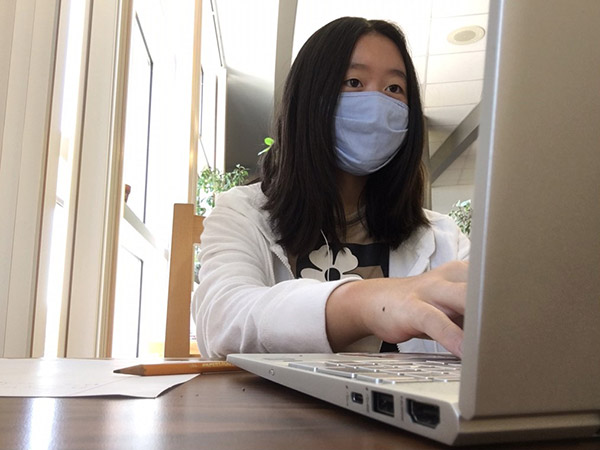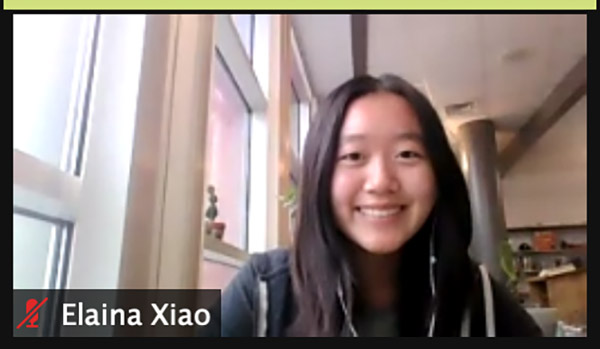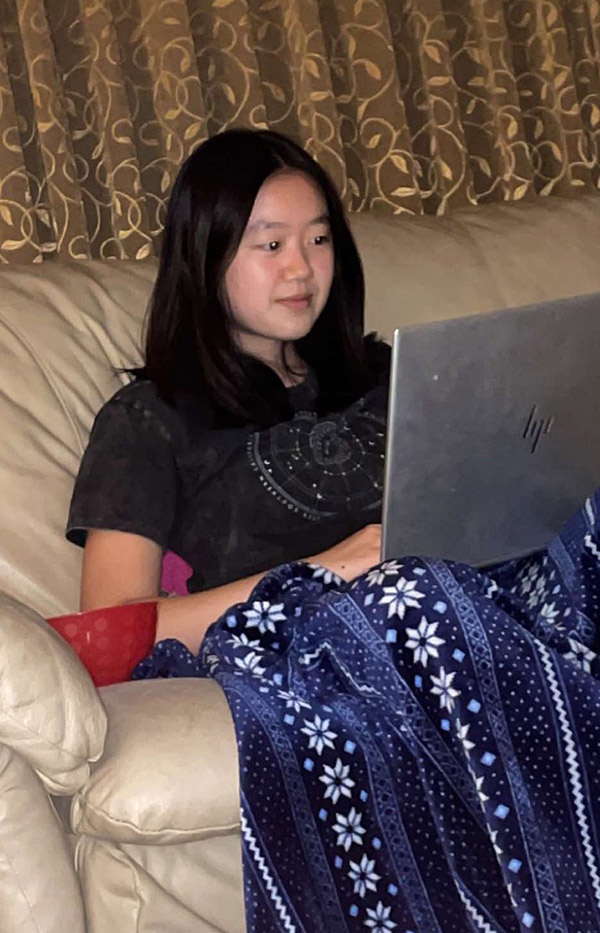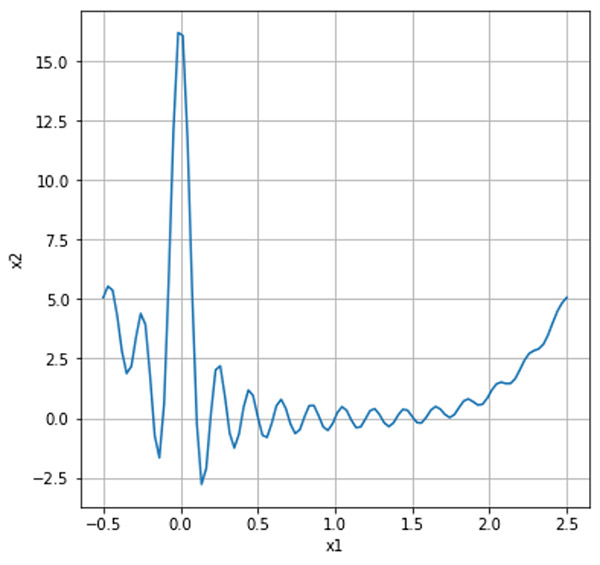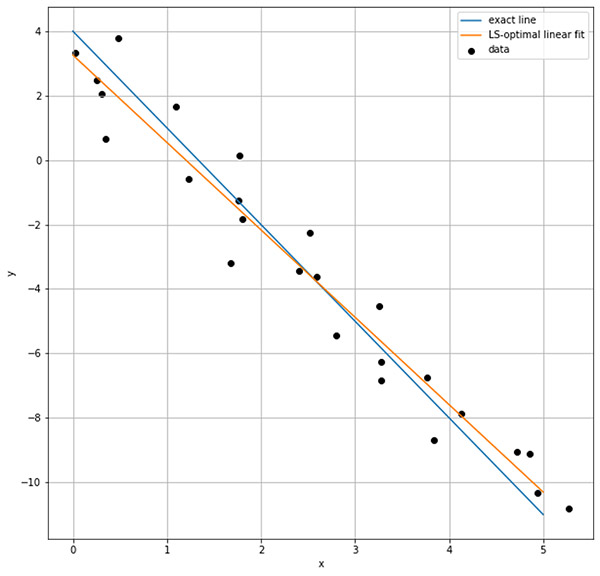Elaina Xaio is enrolled in the Artificial Intelligence course at Stanford’s Pre-Collegiate Studies program. During her first week, Elaina participated in Zoom sessions from 10:00 a.m. to 12:00 noon at the Carbondale Community School Library, followed by office hours with her instructor.
“My teacher, Ross Alexander, is a graduate student at Stanford University and is very understanding and engaging. He writes everything we do down so it is easier to follow. He asks questions and makes sure we are understanding the lectures every so often,” Elaina explains.
Of the 16 students in her class, Elaina has met and will be working in groups with students from various locations within the United States, plus students from Romania, Austria, and India. The students, each with varying knowledge and experience with AI, were asked what they wished to learn from the class. “I want to focus on the real-world implementation of Artificial Intelligence,” Elaina says.
“We get a problem set after every live class session. These problems are different from what I have ever experienced. My Python background has helped me complete the problems, but it still takes me roughly two to three hours to complete; sometimes even longer. The problem sets relate to what we learned during class, while also having us explore new ideas on our own. I have learned about new libraries to use for plotting, which has expanded my Python knowledge even more,” Elaina reports.
“So far, we have identified applications of artificial intelligence in everyday life, described what it means for machines to ‘learn,’ distinguished broadly between supervised, unsupervised, and reinforcement learning, and became mathematically proficient in the selected machine learning algorithms through a fundamental understanding of the basics of linear algebra, statistics, and optimization,” Elaina adds.
“To be more specific, we have touched on scalars, vectors, matrices, transposes, norms, subspaces, projection, eigenvalues, and eigenvectors. We have also learned more about calculus through function mappings, derivatives, gradients, function optimization, mean, and covariance. With plotting, we have learned about k-means clustering and PCA. Lastly, we have worked with algorithms for learning optimal solutions of functions of any dimension, such as gradient descent, gradient descent with momentum, and gradient descent with Nesterov momentum,” Elaina reports.
Elaina is excited to be taking this intriguing and rigorous course. “There is so much to learn about Artificial Intelligence. I have been exposed to areas that I have never known existed before. In addition to class, I have also attended an Undergraduate Admissions talk, which has given me more insight into applying to college and how to represent yourself through writing. I am planning on participating in more events outside of class next week and becoming involved in the SPCS community,” Elaina says.
“In addition to class time, I also took time to enjoy a few Student Life events. During the first week, I went to the Undergraduate Admissions Talk to better understand how to apply to college and how to express myself through the short essays. I went to the talent show and was impressed by the talents of my peers from all around the world! There were artists, singers, people playing instruments, dancers, and so many more interesting acts. My favorite act was a time-lapse of a digital drawing of Taylor Swift! The confidence and friendliness of the performers made me excited to watch every act (and maybe participate in the talent show in the future),” Elaina explains.
Elaina describes her virtual Commencement Ceremony experience at the end of the program. “All of the instructors spoke about their classes. It was a fulfilling moment when my instructor talked about our program. I am very lucky to have such a fun and connected class, as we were able to bond over our shared interests and became even closer because of our differences. After the ceremony, I got to know many of my classmates when we Zoomed and played different games. Although the virtual format makes it very difficult to create bonds with others, we all were able to connect over our love of coding, and it grew into new and exciting friendships! I am so grateful to the Garwin Family Foundation for allowing me to explore Artificial Intelligence, which is unavailable to learn about in most places and being able to grow the family the foundation has provided for me,” Elaina says.
>> Read Elaina’s Final Report (PDF file, 40 KB).
>> Learn about the other students’ experiences in the GFF Scholarship Program.


